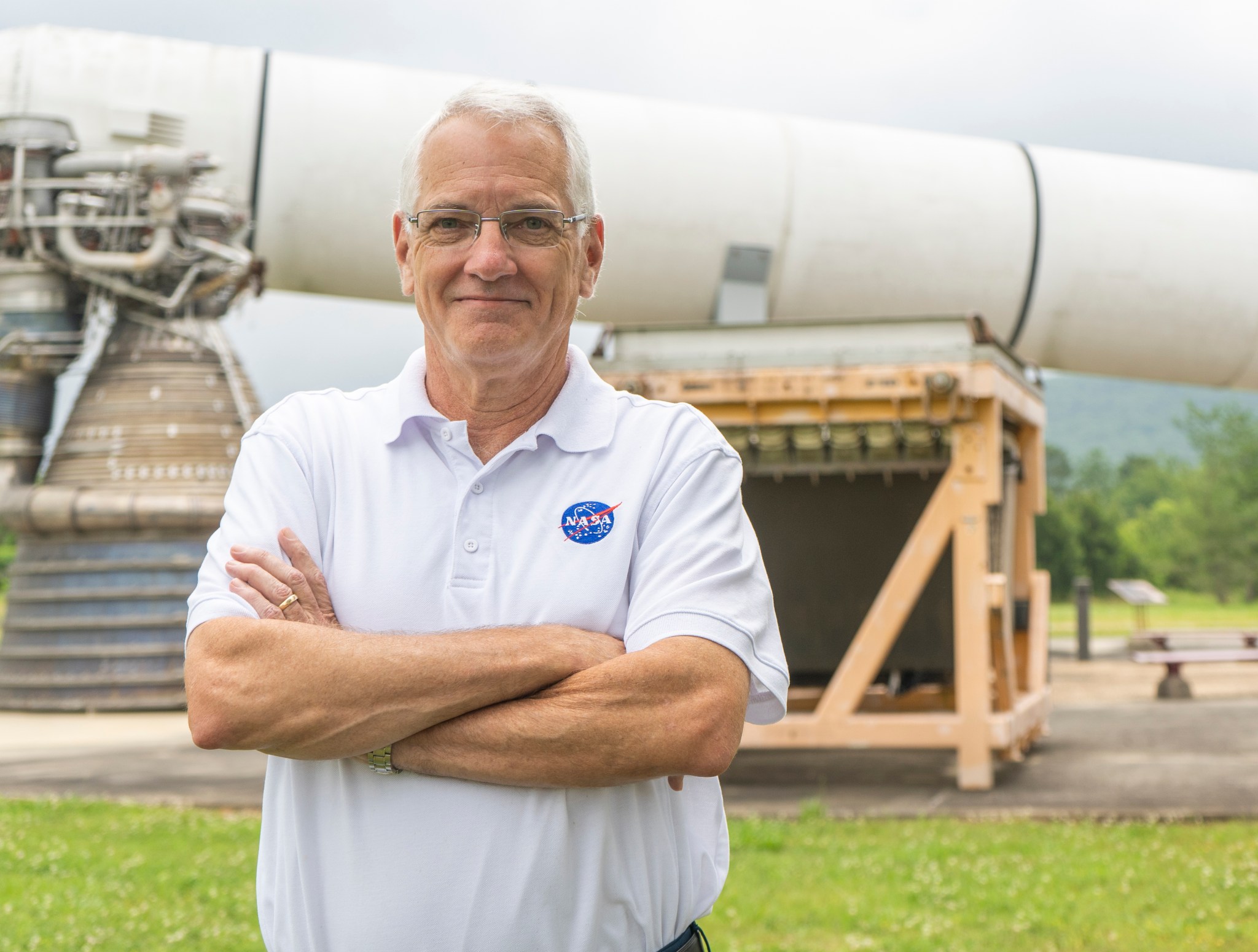Bird watching and rocket launching aren’t normally mentioned in the same breath. One activity combines the beauty and grace of nature with a relaxing personal hobby, while the other is the culmination of thousands of hours of work, calculation and dedication that results in a massive object traveling to the stars.
For Bruce Tiller, however, the two are more alike than most would think. A lifelong bird watcher, Tiller has spent decades appreciating the effortless flight of warblers and finches while simultaneously working to advance the hard-fought flight of humankind. It’s only fitting, then, that Tiller is the manager of the NASA’s Space Launch System (SLS) rocket’s Boosters Office.
On a daily basis, he and his team take steps to help launch the biggest bird there is: SLS.
Tiller works closely with SLS booster manufacturer Northrop Grumman, who builds the boosters in pieces that are delivered to NASA’s Kennedy Space Center in Florida for final assembly.
The largest, most powerful solid propellant booster ever built for flight, the SLS booster stands 17 stories tall and generates more thrust than 14 four-engine jumbo commercial airliners. Together, the SLS twin boosters provide more than 75 percent of the total SLS thrust at launch.

Tiller has always been a bird of a different feather. In a family of doctors and nurses, he was the rebel who became a rocket scientist. Yet, despite his 31-year career with the agency, being a part of the NASA team almost didn’t happen. In fact, space exploration wasn’t something he ever saw in his future.
“Space wasn’t something that drove me as a kid, but I’ve always loved the technical aspects behind it,” Tiller says. “My parents’ involvement with medicine very much influenced me to ultimately pursue a career in science.”
Tiller’s father was the embodiment of the classic, black-bag doctor from the 1950s. Gifted with nearly perfect recall, he often drove around town in his Volkswagen making house calls while Tiller’s mother, also a doctor, worked full-time in public health. It was a dynamic that was unique for the era, but one that instilled an appreciation of hard work and education into the Tiller children.
With plans of being a geologist, Tiller originally received a bachelor’s degree in geology from the University of North Carolina in Chapel Hill before deciding engineering was a better fit for the future. He returned to school to earn his bachelor’s degree in mechanical engineering from the University of Alabama in Birmingham before becoming a thermal analyst at SRS Technologies in support of NASA’s Marshall Space Flight Center in Huntsville, Alabama. He liked it enough to later get a master’s degree in mechanical engineering from the University of Alabama in Huntsville.
Three decades after joining the agency as a thermal analyst supporting the space shuttle, Tiller is still combining his love of science with the work ethic he learned from his parents.
“Space exploration isn’t something that you can do on your own. It takes thousands of people to do what we do,” Tiller says. “That’s the fun part. This is great work and you always feel like you’re a part of something big. It’s an amazing thing to be a part of.”
Focused on expanding humanity’s presence beyond Earth, the Artemis Program is the beginning of the next era of space exploration. By putting the first woman and next man on the Moon, the program aims to establish a sustainable lunar presence with the ultimate goal of sending humans to Mars.
The ambitious nature of Artemis is something Tiller believes will impact the space program and generations of children for years to come.
“Who doesn’t want to do this? You don’t have any trouble getting people excited about NASA’s mission,” Tiller says. “I’m fired up to be a part of the NASA team. All the stuff we do from monitoring Earth to exploring the Moon, Mars, and beyond is pretty fantastic.”
For more information on SLS, visit:
https://www.nasa.gov/exploration/systems/sls/index.html
Tracy McMahan
Marshall Space Flight Center, Huntsville, Alabama
256-544-0034
tracy.mcmahan@nasa.gov




























